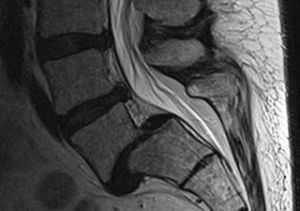Spondylolisthesis Treatment

Non-surgical treatment for adult patients with an isthmic spondylolisthesis is similar to that for patients with low back pain and/or leg pain from other conditions and may include one or a combination of:
Medications
Pain medications, such as acetaminophen, and/or NSAID’s (e.g. ibuprofen, COX-2 inhibitors) or oral steroids to reduce inflammation in the area.
Heat and/or ice application
Heat and/or ice application, to reduce localized pain. Generally, ice is recommended to relieve pain or discomfort directly after an activity that has caused the pain. Heat application is recommended to relax the muscles, and promote blood flow and a healing environment. See Heat and Cold Therapy Information Center.
Physical Therapy
Stretching is recommended, beginning with hamstring stretching and progressing over time. In addition, special attention should be paid to stretching the hamstrings twice daily in order to alleviate stress on the low back. The exercise program should be controlled and gradually increase over time. See Exercise for Sciatica from Isthmic Spondylolisthesis .
Epidural steroid Injections
If the patient is having severe pain, injections can be useful. Epidural injections can help decrease inflammation in the area. The pars fracture itself can be injected with lidocaine and steroids for a diagnostic study. If the patient’s pain is relieved after a lidocaine injection it can be assumed that the pars fracture is the source of the patient’s pain. The steroid can be useful to reduce inflammation in the pars interarticularis, helping to relieve the pain and allow the patient to progress with physical therapy and non-surgical treatment. See Epidural Steroid Injections.
Spondylolisthesis Surgery
In most cases non-surgical treatment is successful in relieving the patient’s pain, but if not surgery may be considered.
Spinal fusion surgery for spondylolisthesis is generally quite effective, but because it is a large procedure with a lot of recovery, it usually is not considered until a patient has failed to find pain relief with at least six months focused on a range of non-surgical treatments.
A posterior fusion with pedicle screw instrumentation is generally considered the gold standard form of lumbar spinal fusion. The surgeon may also recommend a spinal fusion done from the front of the spine at the same time. The type of spinal fusion that is recommended by a surgeon is based largely on a surgeon’s preference and experience, as well as the patient’s clinical situation. See Spinal Fusion Surgery for Isthmic Spondylolisthesis.